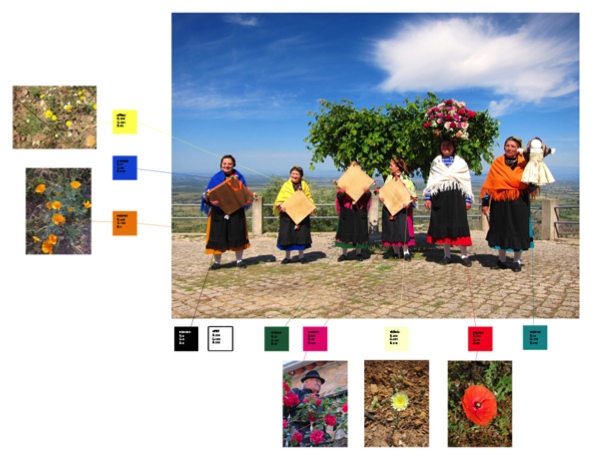Field Trip to Monsanto
At the outset of my research project, I suggested that one intended artistic output would be an installation piece for a gallery setting based on the principles of Cymatics – the study of visible stationary or standing wave patterns induced by sound.
An opportunity to realise this came via an invitation from fellow MIRIAD researcher, Christina Rodrigues, to exhibit as part of a travelling exhibition, ‘The 21st Century Rural Museum‘, a component of her ‘Design for Desertification‘ PhD project.
So in May 2012 I travelled to Monsanto, a small, mountain top village in the Idanha a Nova region of central, rural Portugal and spent time experiencing the local culture. I was particularly struck by the Adufeiras de Monsanto, a group of mostly elderly women from the village who performed in brightly coloured costumes and sang a repertoire of traditional folk songs accompanied by rhythms played on an adufe – a square, framed hand-drum of Arabic origin.
I photographed the Adufeiras dressing each other in traditional costumes, focussing on the colours, patterns and shapes in their fabrics, accessories and jewellery and then filmed and recorded them performing. I also photographed examples of local decorative design and details in the rural architecture as well as the striking local scenery and verdant flora.
Created with flickr slideshow.
My response to this research was to conceive of the Cymatic Adufe – a sculptural, technological, generative, sound-responsive, audiovisual artwork exploring the rich vocal and musical tradition of the Idanha a Nova region. The work would investigate the interplay between sounds and images, materials and forms emblematic of rural life.
Physically, it would resemble a 0.4m square, 2.3m tall column – the bottom half laminated in natural cork the top half of clear acrylic. A speaker would be fitted into the lower section and above this, fixed part way up the acrylic, would sit an adufe. A compact micro-projector would be mounted onto the top of the column and project onto the skin of the adufe below.
The work would deploy Cymatics to visualise the traditional Portuguese folk melody of the Senhora do Almortão as dynamic and shifting patterns on the surface of the adufe. Simultaneously projected onto the top of the adufe, superimposing on and augmenting these natural cymatics forms, would be digital versions of the geometric patterns often found in rural Portuguese decorative design and architectural elements – generated digitally using a sound responsive adaptation of the Superformula, a generalisation of the Superellipse, first proposed by Johan Gielis which he suggests can be used to describe many complex shapes and curves found in nature.
Struck by how the colours of the Adufeiras’ costumes so closely matched the colours of the regional flora I opted to use these as the colour palette for the artwork.

And once it had arrived, I also added some of the colours in the decorative tassels of the adufe itself.
Searching YouTube for renditions of the much loved and interpreted traditional folk melody of the Senhora do Almortão, I found a multitude of versions – a particularly beautiful one performed by Teresa Salgueiro – though none were the required a capellas. So I arranged to record Christina singing a version of the song particularly associated with the region.

